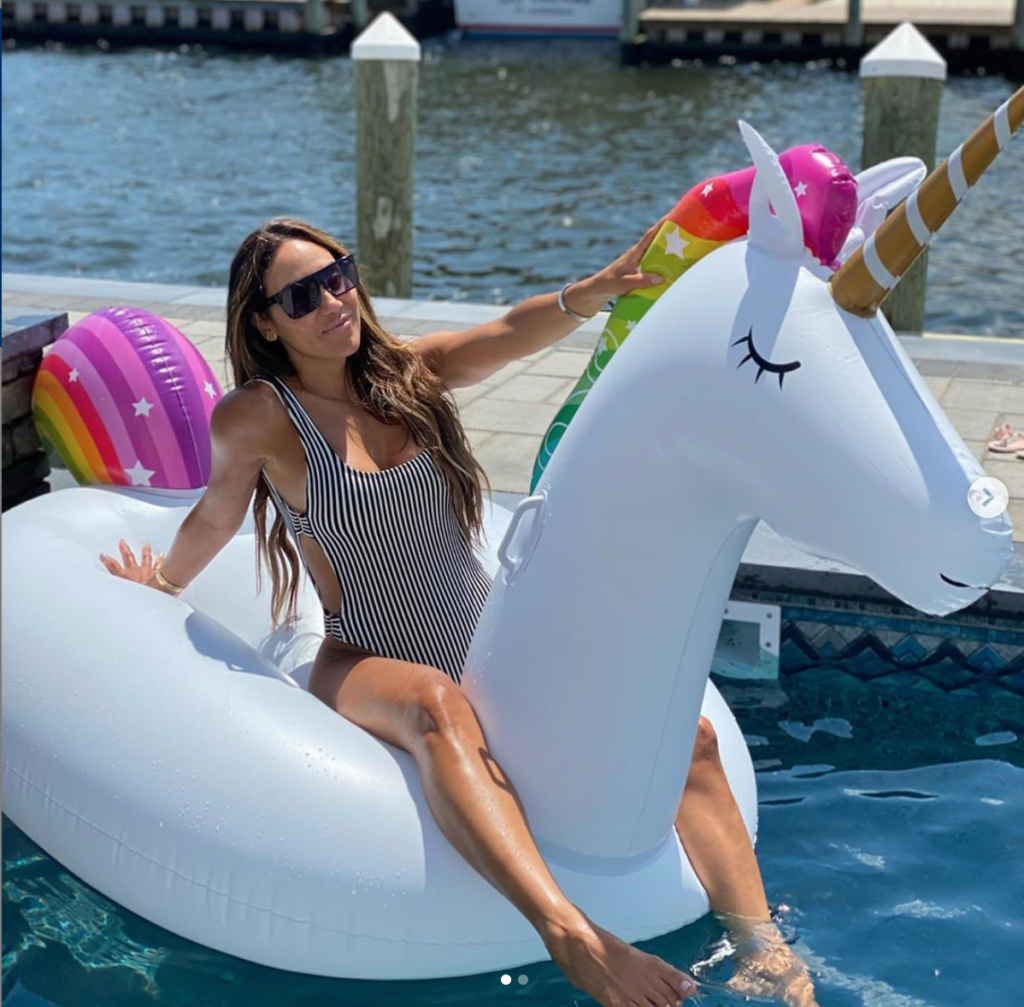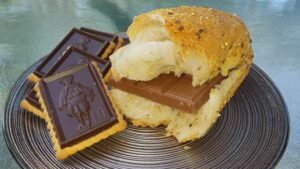
Do you get the urge to eat when you’re not hungry, and just give in? Do you think you can’t stop doing this because you don’t have any willpower?
The fact is that you don’t have to have willpower to make the decision not to eat when you’re tempted to do so. Willpower simply is not sustainable, as I’ll explain.
The reason so many people are overweight is because they eat for all kinds of reasons other than hunger. If you eat only when you’re hungry and stop when you’re lightly full, you can enjoy the foods you love without gaining weight. Not only that, but I lost 46 pounds eating that way in my early 50s, and have helped many people lose weight by learning to eat only when they’re hungry.
But what about those darned urges? How often do you want to eat because you’ve just walked past a bakery, or you saw a pizza advertisement on television? Or because someone brought some sweets to work to share, and they’re just sitting there in the lunch room, staring you in the face every time you walk in.
You Don’t Need Willpower
Maybe you’re thinking, “How can I resist? I must have no willpower.”
Time to drop that thought. You see, using willpower to resist eating is a bad idea.
Willpower Is Resistance
If you’ve watched Star Trek, you’re probably familiar with the Borg, which tells the members of the Starship Enterprise that “resistance is futile.” When it comes to urges, resistance is not only futile, but it can actually make your urges worse.
Research has shown the more we suppress or resist an urge, the more it increases. It gives the urge more power, so it sets you up to struggle. When you resort to willpower, every time you’re faced with some food you want to eat, you have to resist it. White-knuckle it. It doesn’t feel good.
Limited Resource
Not only that, but willpower is a limited resource. Have you ever noticed how much easier it is to stick with your eating plan during the first half of the day and much harder later in the day? I bet you’re more disciplined in general earlier in the day, and it’s easier to motivate yourself, then late afternoon or evening, you struggle getting things done.
Think of your willpower like a tank of fuel. With each new day, we have a new supply in our willpower tank. Then we use it to motivate ourselves to get our work done, to avoid eating doughnuts for breakfast, to do some chores, cook dinner when we’re tired and would rather get take-out, or whatever.
As the day goes on, your willpower reserve gets depleted, and you have less left in the gas tank. If you want to use willpower to eat less at dinner, pass up dessert or not eat a bag of tortilla chips on the sofa while watching Netflix, it’s going to be harder because your daily willpower tank is almost empty.
You Can’t Stop the Waves, But You Can Learn to Surf
Instead of relying on willpower, I’ve got a much better way. There’s a great mindfulness tool that can help you manage those urges to eat when you aren’t hungry. It’s called “urge surfing.”
Awareness is the most important skill you need to stop overeating, lose weight and keep it off without dieting. Mindfulness is all about awareness. Jon Kabat-Zinn, the mindfulness teacher who founded mindfulness-based stress reduction, very wisely said, “You can’t stop the waves, but you can learn to surf.” Life is full of waves and learning how to surf them can help you avoid drowning!
Learning to surf your urges to eat when you aren’t hungry can help you avoid adding those pounds as we get older.
What do I mean by an urge? It’s a strong desire or craving to act impulsively or out of habit. Urges can be triggered by an event, a thought, a feeling, a memory, a place, or even a smell. Urges continue to reinforce a bad habit as a coping response to challenging situations or experiences.
The urge to eat when you aren’t hungry may provide you with temporary pleasure, but it will result in weight gain. That can increase the risk in our 60s for some deadly diseases like heart disease, stroke, and diabetes, to name a few of the big ones.
So going back to the wave analogy, urges to eat when you aren’t hungry, or to eat a lot of sweets or drink too much, are like waves that rise in intensity, peak and then dissipate. If you’ve ever swam in the ocean, you know that there’s no way to beat those waves.
You can’t resist them or fight them, or you may even drown. So you need to go with them. That’s why I’m going to teach you how to surf. Urge surfing is a great way to make smart eating choices instead of giving into immediate gratification.
Try This Urge Surfing Exercise
Before trying this out with food, I’d like you to experiment with non-eating urges you may get in your body. Try this, and really take a few minutes with it:
Sit as still as possible. Try not to move.
Count to 60. Notice any sense of discomfort or restlessness. Notice any sensations, comfortable, uncomfortable or neutral, but don’t move. Just notice. Do you have an urge to move?
Count to 60 again. Notice how your skin tingles on your hands, face or neck. Is the tingling turning into an itch? If you feel an itch, just ride the urge to touch it. Don’t move. Just let the urge be there.
Count to 60 again. Notice how the intensity of the urge changes. How the tingling changes or goes away or starts someplace new.
Take your attention to your mouth. Don’t swallow.
Does my telling you not to swallow cause your mouth to fill with saliva?
Does it bring on the urge to swallow? Don’t swallow. Count to 60 again.
This experiment is about to come to an end. Has the knowledge of the end coming changed your urge to swallow or to scratch anywhere? If you think it’s going to be over, does the urge go away?
Did you notice how much easier it is to ignore those urges when you knew this was going to be over? That’s because you were allowing the process, so the urge dropped off.
How do you apply this to your urge to eat? Well, you just spent the last few minutes ignoring a few urges. Why not learn to do that when you get the urge to eat but aren’t hungry? That will greatly help you choose not to eat when you have the urge but aren’t hungry.
This means you won’t give your body food it doesn’t need. The result will be weight loss and keeping your weight down much easily.
Using Urge Surfing to Avoid Eating When You Aren’t Hungry
Here’s how to use urge surfing to avoid eating when you aren’t hungry. Try this the next time you get this urge:
#1: Notice
Notice the urge to eat when you aren’t hungry. It can be out of habit, or when you see or smell something you like to eat. Stop and feel the pull. Close your eyes if you can. Where do you feel it in your body?
#2: Focus
Focus on the sensations and rate the intensity of the urge from 1-10, 10 being the highest. How does it feel?
#3: Breathe
Take at least three to five slow mindful breaths. Really focus on your breathing. Inhale through your nose and slowly exhale through your mouth. This allows your prefrontal cortex, the rational thinking part of your brain, to take the wheel from the part that controls your habits.
You can even try exhaling while making a humming sound like a bee, or saying “OM.” Does the urge change? Is it diminishing? Try imagining that every time you exhale, you’re exhaling the urge. Pay attention to how your focused breathing changes how you feel.
#4: Ride It Out
Think of the urge as a wave that will crest and go away. You can successfully ride out the wave with your breathing. If your mind starts telling you stories, just refocus on your breath. Think about moving towards your weight or health goal, rather than away from what you really want.
See if you can move past the point where your mind wants you to cave in. Remember, there’s just a bit more before the wave peaks, then goes away. So, keep focusing on your breath and allowing the urge to dissipate.
Know that every time you experience the peak of the wave, it then goes away. It’s an act of self-growth. It strengthens that part of your brain the more you do it. It allows you to make a choice at that pivotal moment – to eat or not eat. You can always choose to surf the urge and not give into it.
Prepare for the Times You’re Most Likely to Feel the Urge
Now think about when you’re most likely to feel the urge to eat when you aren’t hungry. When you get home from work? After dinner while watching TV? At a party? A buffet? A restaurant? Your mom’s house? Whenever you’re near a certain chocolate shop?
When you know to expect it, you can prepare for it. Choose a time when you’re most likely to get the urge to eat when you aren’t hungry. Then decide that today, you will surf those urges. Then be sure to celebrate your wins so your brain associates making good choices with feeling good.
Give yourself a high five or a fist pump, or just think about how good it felt to do that. You can do this! Then repeat whenever necessary. Before you know it, the urge to eat when you aren’t hungry will rarely happen.
Another big cause of the urge to eat when you aren’t hungry is the habit of emotional eating, which is when you eat to avoid your feelings. It’s a habit that you can break. I was an emotional eater for decades, and kicked the habit, and have taught many women how to do it, too.
If you’re ready to learn more about why you even get the urge to eat when you aren’t hungry, and how to manage your emotions so that you stop getting those urges entirely, check out my free video masterclass, Kick the Emotional Eating Habit for Good.
How often do you get the urge to eat when you’re not hungry? Do you just give in? Do you think you can’t stop doing this because you don’t have any willpower? Are you ready to try the exercise of surfing your urge? Please share your thoughts and experiences with the community!





